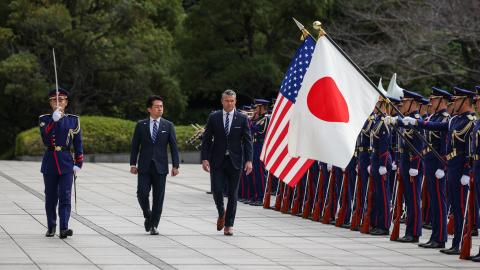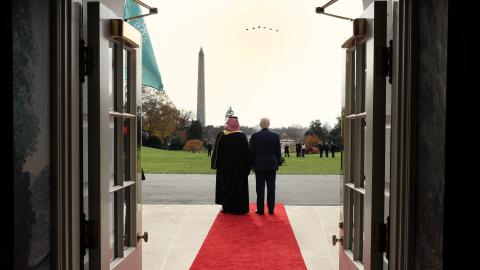Over four years after violent clashes between their troops in June 2020, the world’s two most populous countries, that are nuclear armed neighbors, appear to be easing relations. On the sidelines of the October 2024 BRICS Summit in Kazan, Russia, Indian Prime Minister Narendra Modi and Chinese President Xi Jinping held their first summit meeting since 2019. This was preceded by an announcement of a breakthrough in talks on the four year old border standoff.
The border deal and summit meeting have led to intense speculation about a potential reset in relations and concerns in Western countries that India is seeking to balance between the U.S. and China. Those fears may, however, be hasty. China was and remains India’s key threat and rival in South Asia and the Indian Ocean region, India’s historical neighborhood. India views China’s deepening presence in its neighborhood as an attempt to strategically encircle India on both the continental and maritime fronts.
The two countries have a long-standing border dispute, have fought a war, and China has always opposed India’s support for Tibet and for the Dalai Lama. Above all, China has always opposed India’s rise in Asia and beyond. India’s decision is better viewed as akin to the U.S. policy of simultaneously maintaining cooperation and competition with China.
India and China currently have over 100,000 troops along their 2,167 miles long, largely un-demarcated, border. It took around 30 rounds of military and diplomatic negotiations about border issues and political pressure to “reach an understanding” for “peace and tranquility along the border” in the words of India’s External Affairs Minister, Dr S. Jaishankar.
Civilizational neighbors for over 5000 years, modern India and Communist China have long had a complex relationship. China lays claim to large parts of Indian territory, including the union territory of Ladakh in India’s northwest and the entire state of Arunachal Pradesh in the northeast. China has also never viewed favorably India’s providing refuge to the Tibetan leader, Dalai Lama, and thousands of Tibetan refugees.
Over the last three decades, however, China has laid claim to India’s historical backyard – South Asia and the Indian Ocean region – as part of its sphere of influence. Since the 1990s, China has built close ties with all of India’s immediate neighbors, like ( Pakistan, Sri Lanka, Nepal, Bangladesh, and the Maldives) at India’s expense.
This has been coupled, with an increase in Chinese aggression along the border and in the maritime domain. On multiple occasions starting in 2012, China has sought to capture parcels of land (termed ‘salami-slicing’ by Indian experts) along the continental border. Until 2020, India’s response was limited to diplomatic negotiations with limited military pushback. After the violent 2020 clashes India insisted that since China disturbed three decades of “peace and tranquility” with its actions along the border, relations would only return to normal on diplomatic or economic fronts after the border relations were restored to “status quo ante.”
For the last year there were signals that that Chinese side wanted a return to normalcy on the diplomatic and economic fronts. Similarly, there has been pressure inside India as well, especially within the business community, for easing of economic ties. There was an expectation this would happen once India’s elections took place in May-June of this year. Before the elections PM Modi indicated as much in an interview stating that it would take place as long as there is no new incursion by the Chinese military along the border.
Despite friction-ridden relations, China has remained one of India’s top trading partners with bilateral trade between the two countries crossing $ 136 billion in 2023. In July 2024, on the eve of the presentation of the Indian budget, India’s Chief Economic Advisor pushed for more Foreign Direct Investment from China to “boost exports to the United States and other Western countries.” The argument was this “would help India to keep its growing trade deficit with Beijing under manageable levels.” This too sent a signal, to China especially, that if the border issue de-escalated, commercial ties would improve.
As India seeks to grow its economy it needs economic investment from China. Like all its partners, whether the U.S. or Japan or South Korea or Europe, India understands that trade with China is inevitable. India’s challenge will remain, ensuring this investment is not in critical sectors.
However, none of this changes the Indian state’s perception of China as a strategic threat. In addition to the continental threat, India also faces a maritime challenge from China. Primarily through the Belt and Road Initiative (BRI), China has laid groundwork for what could one day serve as a network of military and naval bases throughout the Indian Ocean. Beijing controls important strategic infrastructure sites like Pakistan’s Gwadar port, Sri Lanka’s Hambantota port, and even a military base in Djibouti. India’s response, though slow and gradual, has been to develop defense and strategic ties with Southeast Asian countries.
Easing of diplomatic relations does not imply any reset in ties. The recent agreement and any meeting between PM Modi and President Xi in Kazan notwithstanding, the underlying frictions and tensions at the core of India-China relations have not changed.
The current border agreement comes after four years of military and diplomatic negotiations. While the latest agreement may lead to disengagement and de-escalation on the border how long that lasts will depend upon the Chinese side.
Historically, China’s PLA has adopted a strategy of periodically testing Indian resolve and so the possibility that another PLA incursion will happen some weeks or some months from now cannot be precluded. A wider border conflict (as opposed to ‘salami-slicing’ maneuvers) would, however, cause what China has long sought to avoid – a closer security alignment between India and the U.S.
The recent de-escalation on the border and the leaders’ level summit are not sufficient to overcome the long-term challenges in India-China relations, rooted in history and conflicting aspirations of leading Asia and the Global South.
Read in South Asia Perspectives.
Enjoyed this op-ed? Subscribe to Hudson’s newsletters to stay up to date with our latest content.

















